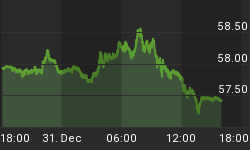
India's demand for gold during the second quarter of 2013 topped all other countries, according to the latest World Gold Council data. As noted by GoldCore, the demand for gold in India rose to its "highest in the last 10 years," with jewelry, bars and coins demand, capping 310 tons during the period.
You can see India isn't the only country in the East enamored with gold. I've discussed many times how China's love for physical gold has endured, as gold deliveries on the Shanghai Gold Exchange climbed to record levels and jewelry stores were flooded with buyers in Beijing, Shanghai and Guangzhou.
Now the World Gold Council (WGC) confirms that in the second quarter, 60 percent of jewelry demand and almost half of all bar and coin demand came from these two countries alone!

While financially traded gold, i.e., ETFs, experienced redemptions, physical gold was in strong demand. Besides Chindia, people in the U.S., Europe, Turkey and the Middle East purchased tons of gold jewelry, bars and coins.
This tells us that the Love Trade shines on. Like gold, the Love Trade doesn't tarnish; it holds its luster.
In India, the Love Trade holds steady in spite of the government imposing import tax hikes on gold in an attempt to reduce the country's current account deficit. In fact, according to the WGC, gold jewelry, bar and coin demand in India alone was 70 percent stronger in the second quarter of 2013 compared to the same quarter last year.
When the increased duties were implemented, I was skeptical that gold demand would be curtailed because of India's affinity to the precious metal.
For decades, Indian families have celebrated weddings, births, festivals and holidays centered on gold and these traditions are passed down from generation to generation. Take the wedding industry, for example, where about half of the gold that Indians buy each year is for a wedding. With an estimated 10 million weddings taking place every year in India, the country sees a lot of gold buying out of love.
That's according to a 60 Minutes feature on the role of gold in India's wedding industry. If you missed it, here's the link on our website.
India's culture is very different from that of many Western countries. I've been to many Indian weddings and have witnessed this special and unique celebration as well as a very tight bond among families. I'm excited to be attending another wedding this November while I am in Delhi at a global CEO summit.
However, the record gold buying we are seeing today isn't only out of love. I believe Indians are also buying out of fear due to its infamously poor and corrupt government policies.
I often say how government policies can be precursors to change. Good policies can drive economic growth and markets respond positively. Bad policies can have the opposite effect. At the same time Indians buy gold out of love for their family and close friends, they are also buying gold out of protection.
Take a look at the chart below, which shows gold's return in Indian rupee compared with gold's return in the U.S. dollar. In the U.S., where the dollar has strengthened, gold has increased only 12 percent on a cumulative basis over the past three years. But in a country with a significantly weakening currency, gold gained nearly 50 percent.

With the government in India recently raising its import tax for gold to 10 percent, I firmly believe Indians will continue indulging in gold, even if they have to smuggle it in.
We'll see if Delhi gets its way, especially as gold is approaching its prime seasonal time. I noticed on Business Insider that JP Morgan expressed a similar thought: "Indian demand is quite seasonal related to events and festivals. While some might argue for less Indian buying due to tougher regulations and the weaker rupee making the metal more expensive, the WGC data suggests the opposite."

When I was on Bloomberg Radio and CNBC in August, the anchors were asking me about gold's movements and if investors should follow the gold buying patterns of George Soros and John Paulson.
These hedge fund managers are making huge short-term bets, which is a very different strategy from what I've suggested. I have always advocated holding gold like insurance, with only a 5 to 10 percent weighting in gold and gold companies, and rebalancing annually.
Want to receive more on gold? Sign up to receive email updates from Frank Holmes, follow us on Twitter or like us on Facebook.
















